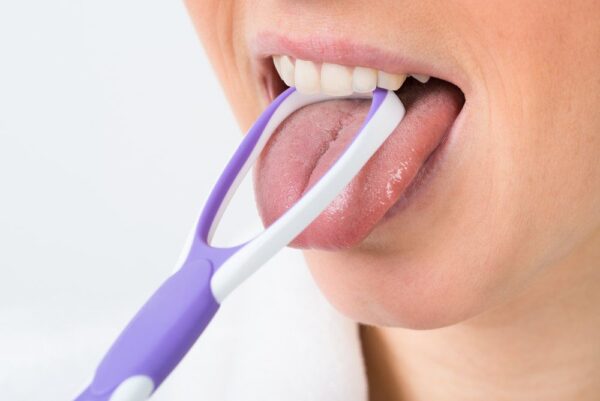Tongue scraper, often overlooked in oral care routines, hold a key role in maintaining dental health. While brushing and flossing take the spotlight, the benefits of tongue scraping are equally significant. Let’s embark on a journey to understand this simple yet powerful tool for oral hygiene.
Unraveling History and Origins
The practice of tongue scraping traces its roots back centuries to ancient Ayurvedic traditions in India. It was revered for its ability to eliminate toxins and promote overall well-being. As time progressed, this ritual transcended cultures, shaping the modern tongue scraper we use today.
Embracing the Benefits
Elevating Oral Hygiene
Tongue scraping serves as a formidable ally in eliminating bacteria, food particles, and dead cells from the tongue’s surface, combating bad breath and fostering oral health.
Reveling in Fresh Breath
By banishing odor-causing bacteria, tongue scraping breathes new life into your breath, boosting confidence in social interactions.
Heightening Taste Perception
A pristine tongue paves the way for taste buds to thrive, intensifying the pleasure derived from food and beverages.
Diverse Types of Tongue Scraper
Metal Tongue Scrapers
Renowned for their durability and ease of maintenance, metal tongue scraper excel in removing debris effectively.
Plastic Tongue Scrapers
Lightweight and economical, plastic tongue scrapers offer a gentle touch on the tongue, ideal for daily use.
Copper Tongue Scrapers
Harnessing antimicrobial properties, copper tongue scrapers provide an added layer of defense against oral bacteria.
Mastering the Technique
Preparation
Begin by rinsing your mouth with water to loosen debris and bacteria before employing the tongue scraper.
Execution
With a gentle touch, position the scraper at the back of your tongue, gliding it forward to expel debris with each stroke. Repeat this process, cleansing the scraper as needed.
Frequency
For optimal results, integrate tongue scraping into your daily regimen, ideally performed in the morning and evening.
Dispelling Common Misconceptions
Despite its advantages, misconceptions abound regarding tongue scraping, including the unfounded belief that it damages taste buds when executed correctly.
Navigating the Selection Process
When selecting a tongue scraper, prioritize factors such as material, design, and ease of use. Opt for one that aligns with your preferences and offers a comfortable grip.
Understanding Potential Risks
While rare, some individuals may experience mild discomfort or a gag reflex initially. Start gradually and increase pressure slowly to mitigate any potential irritation.
Exploring Alternatives
For those averse to tongue scrapers, alternatives like brushing the tongue with a toothbrush or utilizing mouthwash can serve as viable options, albeit potentially less effective.
Embracing the Practice
In essence, tongue scraping emerges as a simple yet potent technique to elevate oral hygiene, refresh breath, and refine taste perception. By incorporating this practice into your daily routine and adhering to proper techniques, you pave the path toward a cleaner, healthier mouth.
